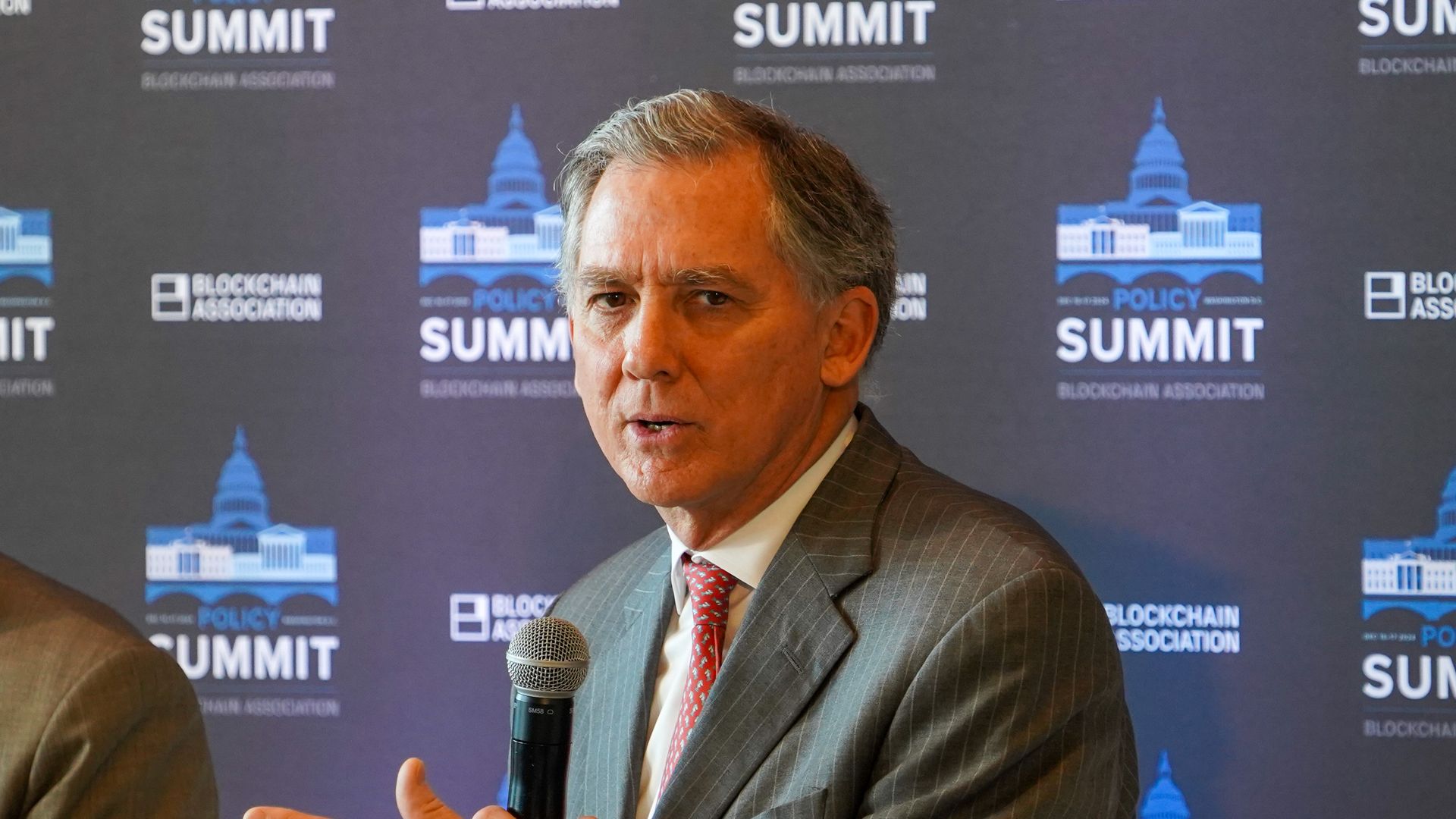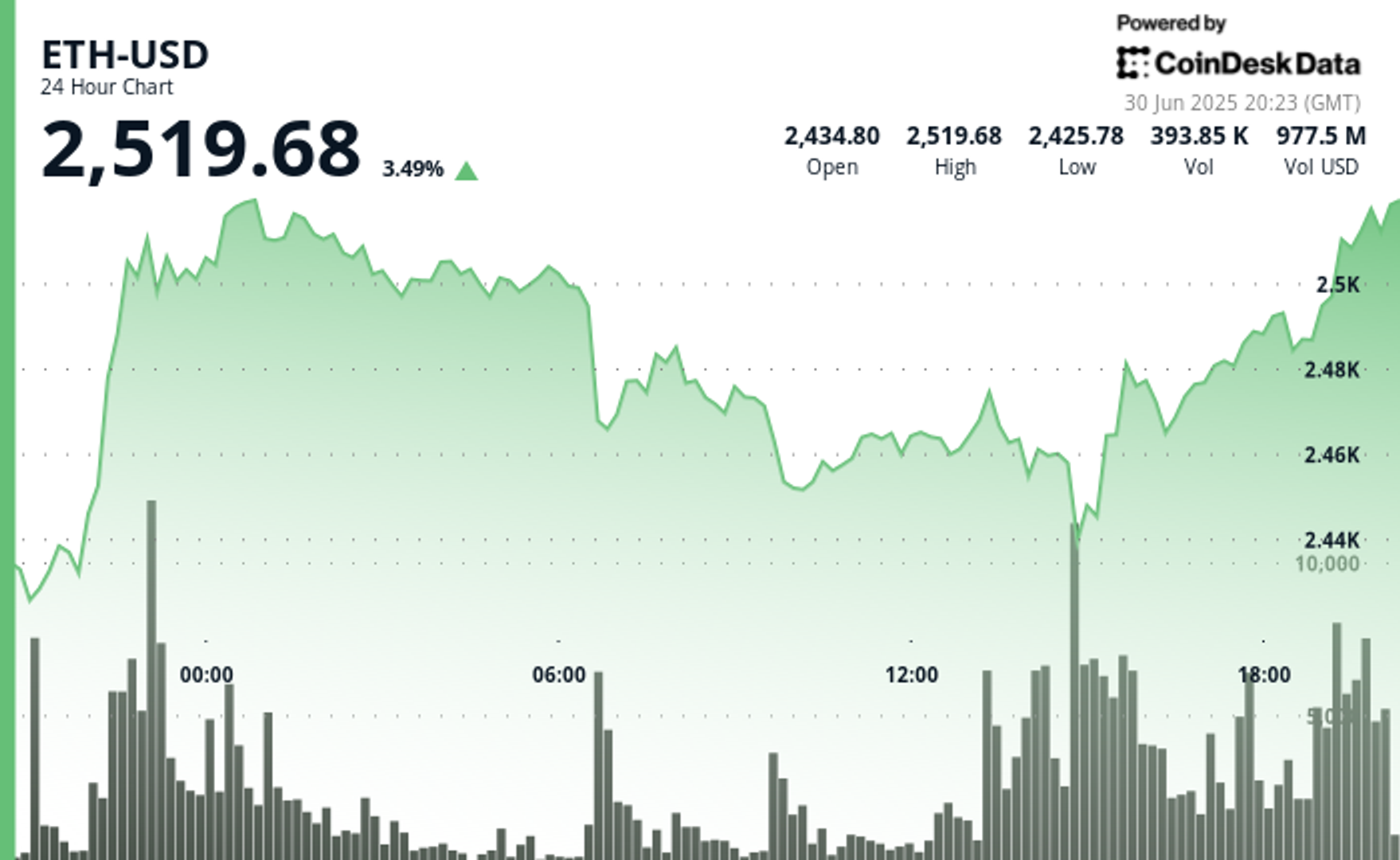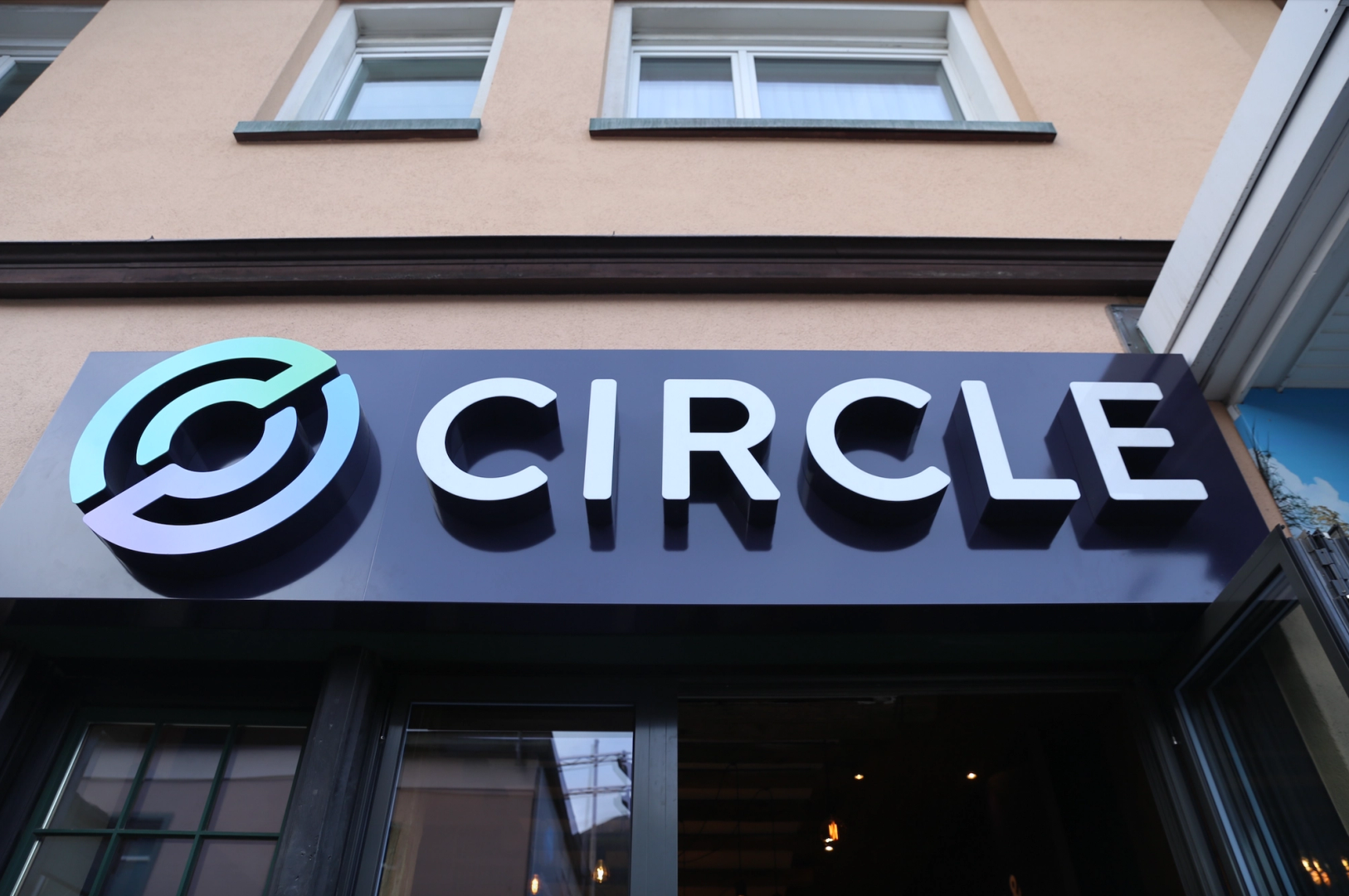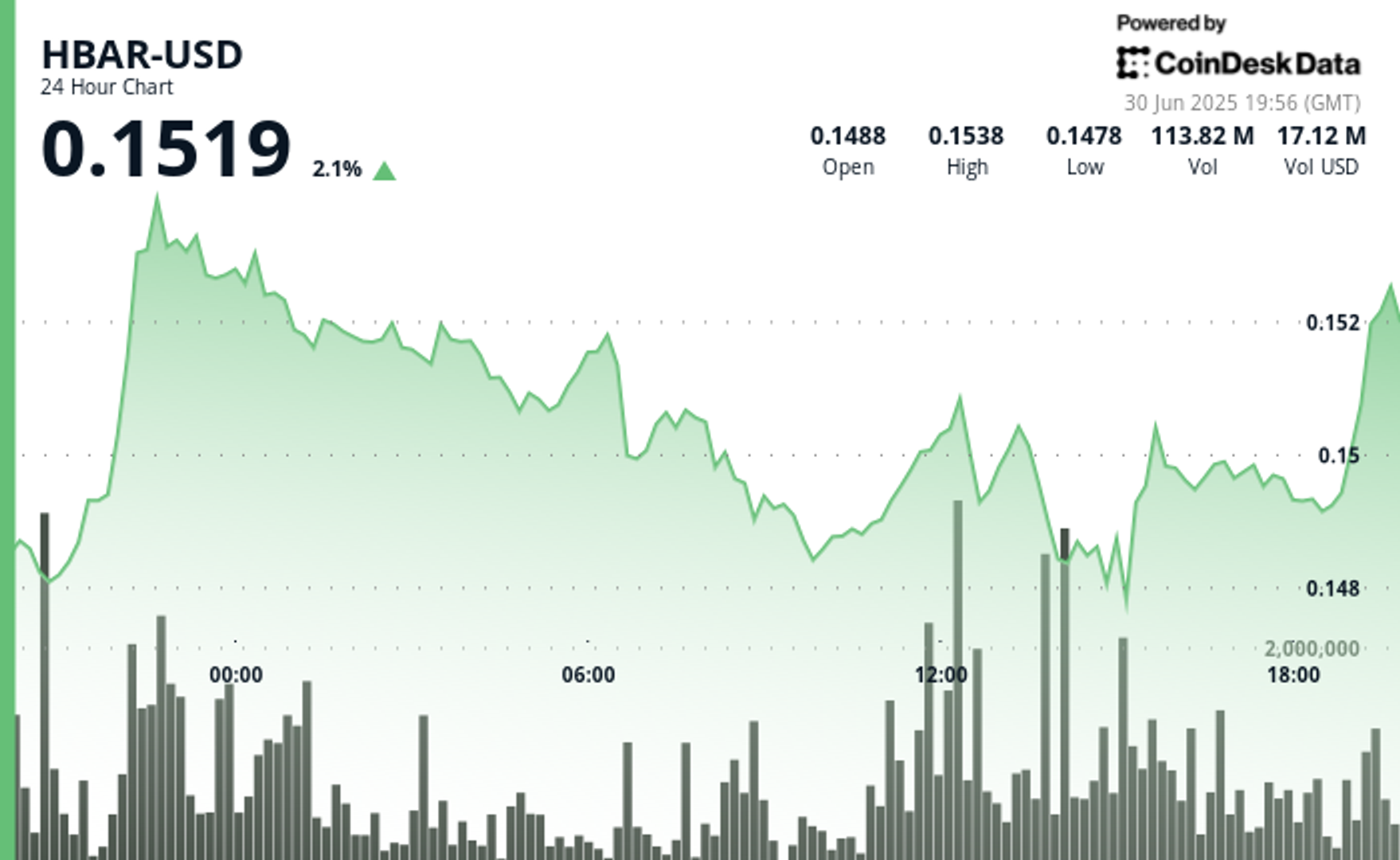Uncategorized
Stablecoin Bills in House and Senate Still Need to Mesh on Several Points: French Hill

The U.S. Senate may be fast approaching a final vote on regulating stablecoins, which would be a high-water mark for crypto legislation in Congress, but Representative French Hill said the Senate’s bill has some key differences with a similar effort in the House of Representatives, and those would need to be ironed out before it can become law.
«The bills are substantially similar,» said Hill, the chairman of the House Financial Services Committee that has been at the forefront of the congressional negotiation over stablecoins for years, at an Atlantic Council event on Tuesday. «There are some differences that are not insurmountable but do need to be rectified and clarified.»
Hill said one of the standout differences includes the House’s tougher requirements on «reciprocity» of international regulation over foreign issuers of stablecoins that might trade in the U.S. — a category most often associated with the leading global token, Tether’s USDT.
«You can either be registered in the U.S. and be a U.S. company under the stablecoin law and you are fully compliant, or you are in a jurisdiction recognized by the U.S. to have a substantially similar regime and enforcement,» Hill said, noting the House version — which cleared his committee with bipartisan support but hasn’t faced a floor vote — seems to be more strict than the Senate’s.
However, he noted «we don’t know the final text of their bill,» which is still being negotiated and amended.
Hill also said the House bill has a «cleaner» pathway for determining what entities at the state or federal level regulate the issuers, depending on their business models.
And the two chambers pursued different approaches to letting non-financial companies issue stablecoins, which touches on longstanding concerns over the traditional separation of banking and commerce and has drawn criticism from Democrats who say they’re worried about tech giants taking over the financial system. The House version says such companies are free to issue stablecoins under regulation by the Office of the Comptroller of the Currency, while the latest Senate version said that certain public companies would be banned from putting out the tokens. Hill said the Senate has some work to do on clarifying its approach.
He said he wonders about the common narrative of stablecoin legislation being easier to pass in Congress than the more complex and far-reaching oversight of the entire crypto markets, citing the House’s success in passing the latter in the last session while getting hung up on its stablecoin negotiations.
But Hill also acknowledged the years of paralysis in the Senate over crypto matters, saying that the chamber’s recent actions on its stablecoin legislation, the Guiding and Establishing National Innovation for U.S. Stablecoins (GENIUS) Act, are «really important» to moving the effort forward. He said he’s optimistic the House will do its part, too.
«The House is really in a position to deliver on President Trump’s promises,» he said, referring to President Donald Trump’s wish to have the stablecoin and market-structure bills on his desk for signatures by the August congressional recess.
In U.S. lawmaking, both the Senate and the House have to ultimately agree to identical versions of a bill before it can be signed into law by the president. If the Senate approves its stablecoin bill as soon as this week, the House has the choice of voting on that same language or pursuing its own. If it passes a different version, the two would have to be hashed into a compromise version that would need another round of approvals in each chamber.
In recent weeks, the stablecoin legislation has cleared the Senate Banking committee and early procedural votes on the floor with massive bipartisan support. But it did get delayed at one point by objections from Democrats that it didn’t include enough safeguards for illicit activity, and that the bill should ban public officials such as the president from engaging in the business.
Hill acknowledged, as he had at Consensus 2025 in Toronto, that Trump’s personal involvement with crypto businesses — including stablecoins — has made the legislative debate more political than he’d like.»It has made it more complicated, because it’s a distraction from that core work,» Hill said.
Read more: Trump’s Team ‘Knows Nothing’ About Apparent ‘$TRUMP Wallet’ Launch
Uncategorized
ETH Price Surges as $2.9B Inflows, EthCC, and Robinhood’s L2 Fuel Bullish Sentiment

Ether (ETH) 3.5% in the past 24 hours to $2,519 as of 18:59 UTC on June 30, according to CoinDesk Research’s technical analysis model, supported by continued institutional demand, network upgrades, and major retail platform integrations.
Institutional interest remains robust, with CoinShares reporting $429 million in net inflows into ether investment products over the past week and nearly $2.9 billion year-to-date. This trend has coincided with a declining ETH supply on exchanges and rising staking levels, with over 35 million ETH —a round 28% of the total supply — now locked in proof-of-stake contracts. Market analysts suggest that these factors are reducing liquid supply and bolstering ether’s long-term investment thesis.
Robinhood announced on Monday that it is developing its own Layer-2 blockchain using Arbitrum’s rollup infrastructure. The network is not yet live, but the initiative will eventually support Ethereum staking, tokenized stock trading, and perpetual crypto futures. Although the L2 is under development, the decision to build it on Ethereum’s rollup ecosystem is seen as a long-term vote of confidence in Ethereum’s scalability roadmap.
Ethereum co-founder Vitalik Buterin has also introduced a new digital identity framework using zero-knowledge proofs. This system allows users to verify traits or credentials without revealing private data and is designed to help Web3 apps incorporate privacy-preserving identity systems. Analysts view this as a key step toward wider adoption of decentralized applications requiring sensitive user authentication.
Meanwhile, the Ethereum Community Conference (EthCC) kicked off in Cannes, France, gathering more than 6,400 attendees and 500 speakers. The event showcases Ethereum’s ongoing developer momentum through presentations on new tools, scaling strategies, and protocol improvements.
Despite the positive momentum, ETH remains just below its 200-day moving average, suggesting technical barriers still exist. However, the confluence of inflows, developer progress, and scaling plans continues to support a constructive outlook.
Technical Analysis Highlights
- Ether traded between $2,438.50 and $2,523 from June 29 19:00 to June 30 18:00, marking a 3.47% range.
- The largest spike occurred during the 22:00–23:00 UTC window on June 29, when ETH surged 2.9% on volume of 368,292 ETH, briefly pushing through the $2,500 barrier.
- On June 30 at 15:00 UTC, ETH found strong support around $2,438 on above-average volume, confirming a bullish floor.
- A local high of $2,523 was reached earlier in the day, establishing resistance just above the psychological $2,500 level.
- During the final hour from 18:00 to 18:59 UTC on June 30, ETH retraced from an intraday peak of $2,499.19 to close at $2,487.19.
- A sharp upward move between 18:20–18:21 saw ETH climb 1.6% on 6,318 ETH volume, stalling near $2,499.
- As of 20:23 UTC on June 30, ETH traded at $2,519, up 3.49% in 24 hours, signaling renewed bullish momentum into the Asia open.
Disclaimer: Parts of this article were generated with the assistance from AI tools and reviewed by our editorial team to ensure accuracy and adherence to our standards. For more information, see CoinDesk’s full AI Policy.
Uncategorized
Circle Applies for National Trust Bank Charter

Circle (CRCL), the company behind the USDC stablecoin, said Monday it has filed an application with the Office of the Comptroller of the Currency to form a federally regulated national trust bank.
A federal trust charter would bring Circle under direct OCC oversight, aligning it with how traditional financial institutions are regulated. If approved, the new entity, which would be called First National Digital Currency Bank, N.A. would oversee custody of USDC reserves and offer services tailored to institutions. If approved, Circle would join the ranks of federally chartered institutions like Paxos and Anchorage, both of which previously secured trust bank status to offer crypto-related services nationwide.
The trust bank status would allow Circle to operate across state lines without obtaining separate licenses in each state — a hurdle that has complicated expansion for many digital asset companies. It would also permit Circle to offer regulated digital asset custody services to institutional customers.
The move signals a strategic effort by Circle to solidify its regulatory standing as the U.S. mulls legislation like the GENIUS Act, which would create new guardrails for dollar-backed stablecoins. The company said becoming a national trust bank would help it meet anticipated requirements under the bill, which passed through the Senate earlier this month and now awaits a vote in the House of Representatives.
«By applying for a national trust charter, Circle is taking proactive steps to further strengthen our USDC infrastructure,» Circle CEO Jeremy Allaire said in a statement. «We will align with emerging U.S. regulation for the issuance and operation of dollar-denominated payment stablecoins, which we believe can enhance the reach and resilience of the U.S. dollar, and support the development of crucial, market neutral infrastructure for the world’s leading institutions to build on.”
Circle went public last month and issues the world’s second-largest stablecoin, USDC, and the leading euro-pegged token EURC.
The OCC, which oversees national banks and federal savings associations, must still review and approve Circle’s application. The agency has granted similar charters to a handful of crypto firms in recent years, signaling growing regulatory acceptance of digital asset companies operating within the traditional banking framework.
UPDATE (June 30, 2025, 20:50 UTC): Adds additional information.
Uncategorized
HBAR Climbs 2.1% as Traders Digest ETF Review, AI Launch, and Energy Governance Move

Hedera’s native token HBAR HBAR extended its rally on Sunday, trading up 2.1% to $0.1519 as of 19:56 UTC on June 30, according to CoinDesk Research’s technical analysis model.
The move follows a flurry of ecosystem updates that broaden Hedera’s enterprise reach and reinforce its growing footprint in AI, gaming, and sustainability.
On June 24, Blockchain for Energy (B4E), a nonprofit focused on sustainability data management in the energy sector, officially joined the Hedera Governing Council. B4E already runs its carbon tracking platform on the Hedera network, and its addition brings domain expertise in emissions reporting and digital MRV (measurement, reporting, and verification) standards. As a council member, B4E will run its own node and contribute to governance decisions—particularly those aligned with environmental transparency and enterprise accountability.
Just two days later, Hedera unveiled its AI Studio, an open-source software development kit designed to help developers build decentralized applications powered by artificial intelligence. The suite includes an Agent Kit that integrates with LangChain and enables AI agents to interact directly with Hedera’s consensus and token services using natural language commands. The goal is to lower the barrier for AI-native apps while maintaining onchain auditability, transparency, and regulatory alignment.
On the gaming front, Hedera Foundation announced on June 19 a partnership with The Binary Holdings (TBH), a Web3 infrastructure firm. The collaboration aims to bring Hedera-based gaming apps to mobile users in Southeast Asia via OneWave, TBH’s decentralized app store. Integrated into native telecom platforms across Indonesia and the Philippines, OneWave is expected to onboard over 169 million users with built-in Web3 rewards and onchain verification.
Meanwhile, in mid-June, the U.S. Securities and Exchange Commission began a formal review of the Canary HBAR ETF, which would offer direct exposure to HBAR via a regulated investment vehicle. A public comment period is now open ahead of the SEC’s July 7 deadline. If approved, the ETF could catalyze broader institutional access and further legitimize HBAR’s role in capital markets—though regulatory scrutiny remains high, and analysts remain divided on long-term token utility.
Technical Analysis Highlights
- HBAR traded in a 4.1% range from $0.1478 to $0.1538 between June 29 19:00 UTC and June 30 18:59 UTC.
- A strong breakout occurred during the 22:00 hour on June 29, with price surging to $0.154 on volume of 104.5M units.
- Major support formed at $0.148 between 14:00–15:00 UTC on June 30, with 80.6M units traded.
- From 18:00–18:59 UTC on June 30, HBAR showed a V-shaped recovery, dipping to $0.149 before rebounding.
- During the 18:20–18:21 UTC window on June 30, price stabilized with 1.3M in volume, forming short-term support at $0.149.
- As of 19:56 UTC on June 30, HBAR traded at $0.1519, up 2.1% for the day with resistance seen at $0.1538.
Disclaimer: Parts of this article were generated with the assistance from AI tools and reviewed by our editorial team to ensure accuracy and adherence to our standards. For more information, see CoinDesk’s full AI Policy.
-

 Business9 месяцев ago
Business9 месяцев ago3 Ways to make your business presentation more relatable
-

 Entertainment9 месяцев ago
Entertainment9 месяцев ago10 Artists who retired from music and made a comeback
-

 Fashion9 месяцев ago
Fashion9 месяцев agoAccording to Dior Couture, this taboo fashion accessory is back
-

 Entertainment9 месяцев ago
Entertainment9 месяцев ago\’Better Call Saul\’ has been renewed for a fourth season
-

 Business9 месяцев ago
Business9 месяцев ago15 Habits that could be hurting your business relationships
-

 Entertainment9 месяцев ago
Entertainment9 месяцев agoDisney\’s live-action Aladdin finally finds its stars
-

 Entertainment9 месяцев ago
Entertainment9 месяцев agoNew Season 8 Walking Dead trailer flashes forward in time
-

 Tech9 месяцев ago
Tech9 месяцев ago5 Crowdfunded products that actually delivered on the hype





